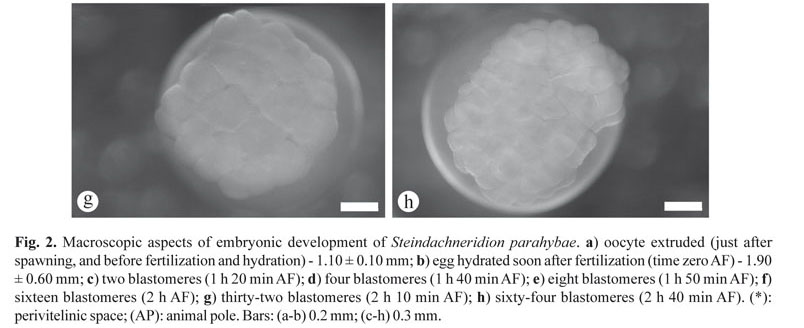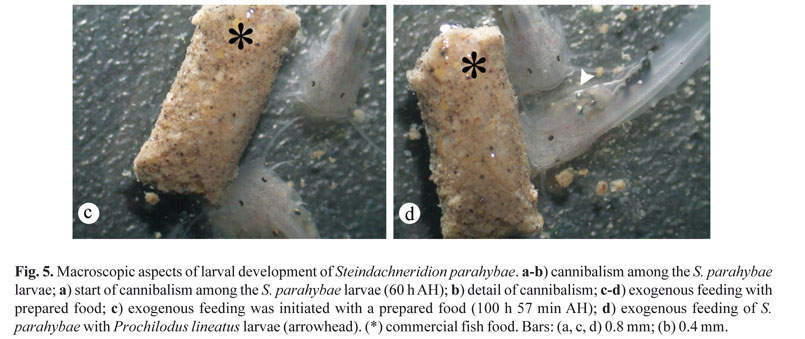Steindachneridion parahybae is a freshwater catfish endemic to the Paraíba do Sul River and is classified as an endangered Neotropical species. An increasing number of conservation biologists are incorporating morphological and physiological research data to help conservation managers in rescue these endangered species. This study investigated the embryonic and larval development of S. parahybae in captivity, with emphasis in major events during the ontogeny of S. parahybae. Broodstocks were artificially induced to reproduce, and the extrusion occurred 200-255 degree-hours after hormonal induction at 24°C. Larval ontogeny was evaluated every 10 minutes under microscopic/stereomicroscopic using fresh eggs samples. The main embryogenic development stages were identified: zygote, cleavage, including the morula, blastula, gastrula phase, organogenesis, and hatching. The extruded oocytes showed an average diameter of 1.10 ± 0.10 mm, and after fertilization and hydration of eggs, the average diameter of eggs increased to about 1.90 ± 0.60 mm, characterized by a large perivitelline space that persisted up to embryo development, the double chorion, and the poles (animal and vegetative). Cell division started about 2 minutes after fertilization (AF), resulting in 2, 4, 8 (4 x 2 arrangement of cells), 16 (4 x 4), 32 (4 x 8) and 64 (2 x 4 x 8) cells. Furthermore, the blastula and gastrula stages followed after these cells divisions. The closed blastopore occurred at 11 h 20 min AF; following the development, the organogenetic stages were identified and subdivided respectively in: early segmentation phase and late segmentation phase. In the early segmentation phase, there was the establishment of the embryonic axis, and it was possible to distinguish between the cephalic and caudal regions; somites, and the optic vesicles developed about 20 h AF. Total hatching occurred at 54 h AF, and the larvae average length was 4.30 ± 0.70 mm. Gradual yolk sac reduction was observed during the first two days of larval development. The first feeding occurred at the end of the second day. During the larval phase, cannibalism, heterogeneous larval growth and photophobia were also observed. This information will be important in improving the artificial reproduction protocols of S. parahybae in controlled breeding programs.
Artificial reproduction; Early development; Eggs; Larvae; Surubim do Paraíba


















